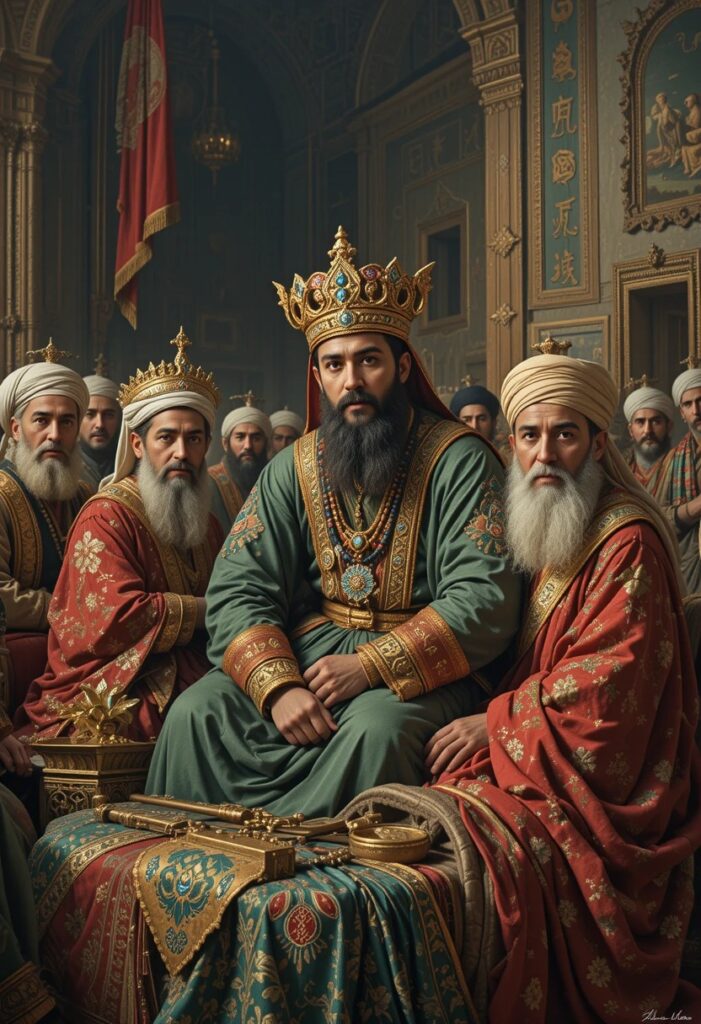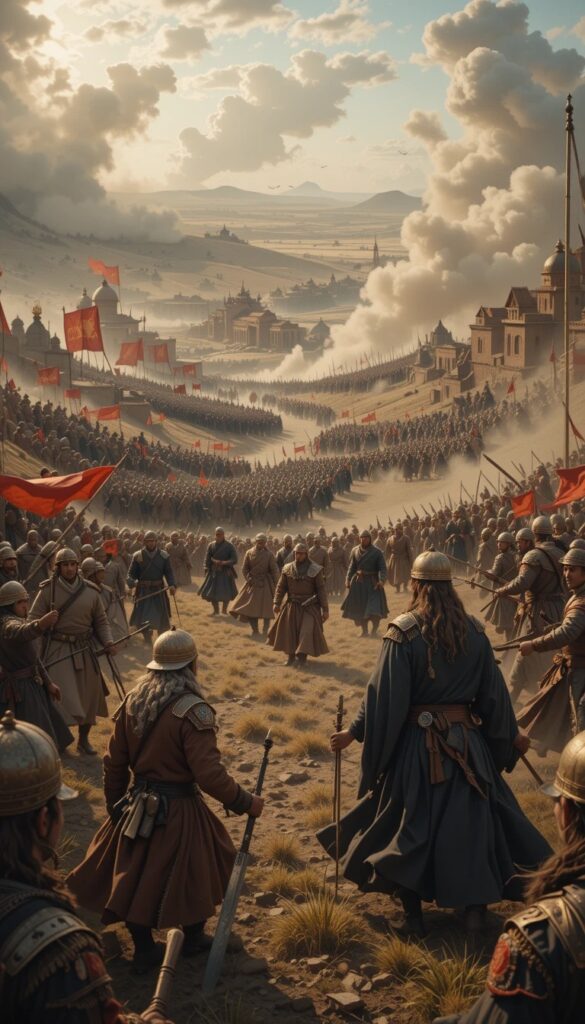Khwarazmian Dynasty (1077–1231)
The Khwarazmian Dynasty was one of the most significant Persian dynasties in the medieval Islamic period. It ruled over vast territories in Greater Khorasan, Central Asia, and parts of Persia from the late 11th century to the early 13th century. The dynasty played a crucial role in shaping the region’s political, military, and cultural history until its downfall following the Mongol invasion.


Origins and Establishment
- The region of Khwarazm (modern-day western Uzbekistan and northern Turkmenistan) was a vital center of trade and agriculture due to its strategic location south of the Aral Sea.
- The dynasty initially emerged as vassals of the Seljuks. Qutb al-Din Muhammad, the first Khwarazmshah, was appointed governor of Khwarazm by Sultan Sanjar of the Seljuk Empire.

Golden Age and Territorial Expansion
- The dynasty reached its zenith under Ala al-Din Muhammad Khwarazmshah (1200-1220 CE), who expanded the empire by defeating the remnants of the Seljuks, Ghurids, and Qara-Khitans.
- At its height, the Khwarazmian Empire stretched from the Indus River in the east to the Caucasus and Iraq in the west.
Political Challenges and Strategic Errors
- Ala al-Din Muhammad’s autocratic nature and poor diplomatic strategies alienated potential allies.
- One of his greatest blunders was the execution of Mongol envoys, which provoked a devastating invasion by Genghis Khan.

Mongol Invasion and Collapse
- In 1219 CE, Genghis Khan launched a massive invasion of the Khwarazmian Empire.
- Ala al-Din Muhammad fled without mounting effective resistance and eventually died on an island in the Caspian Sea.
- His son, Jalal al-Din Mingburnu, led a valiant but ultimately unsuccessful resistance against the Mongols.
Cultural and Economic Contributions
- Jalal al-Din achieved notable victories, including the Battle of Parwan, but was eventually defeated by the Mongols.
- He fled to the western parts of Persia, establishing a brief rule in Azerbaijan and Iraq before being killed by Kurdish tribes in 1231 CE.

Jalal al-Din Mingburnu’s Resistance
- Jalal al-Din achieved notable victories, including the Battle of Parwan, but was eventually defeated by the Mongols.
- He fled to the western parts of Persia, establishing a brief rule in Azerbaijan and Iraq before being killed by Kurdish tribes in 1231 CE.
Historical Significance
- The Khwarazmian Dynasty was one of the last major Iranian dynasties before the complete Mongol domination of Persia.
- Jalal al-Din’s resistance against the Mongols is remembered as a symbol of defiance.
- The fall of the Khwarazmian Empire paved the way for the Mongol conquests of the Islamic world and Persia.
